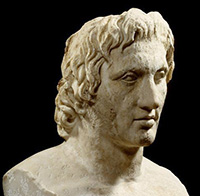FINE STYLE COINS AND MEDALS
Since 2006
EL Hekte – Sixth Stater ( 2.35 g). Lydo-Milesian standard. Flattened striated surface / Two incuse squares. Weidauer Group II, 6–8; Artemision 29; Elektron II 11–2; Traité I 12; SNG Kayhan 680.
IONIA, Uncertain. Circa 650-600 BC
Electrum Trite (4.68 g), Lydo-Milesian standard. Geometric figure composed of a cross centered upon a polygon of eight sides. Reverse: Rectangular incuse divided horizontally and vertically into several compartments, some containing pellets. McFadden 1; Weidauer -; Elektron I 16; SNG Kayhan 697.
Gold Stater (8.05 g.) Confronted foreparts of lion right and bull left, both with outstretched foreleg / Two square punches of different size, side by side, with irregular interior surfaces. SGC 34-18, MBC -32
Well pedigreed and published and amongst the finest extant, The NGC census lists only 4 gold staters graded to this gem mint level. Most of the finest have been graded. There aren't likely to be many more. This coin also has perfect strike and surface grades. A virtually perfect example of the world's first gold coin..
A cover coin of the December 1,2 1990 Superior Gallaries Sale, Lot 2087. Comes with the original auction catalogue (along with a prices realized list .) An impressive provenance crucial for such an important coin. Provenance noted on the holder.
Serious buyers please email for the price.
Very Rare late type perfectly centered with superb style. Attributed to the Sardes mint, but the striated reverse and fluid style is reminiscent of the Alexandrine darics from the Babylon mint.
The same type in similar condition sold for $16,800: Triton xxi lot 529

A masterful portrait of the finest style. Well struck in high relief, with an insignificant flan flaw in the reverse field, otherwise mint state, and highly important as the portrait most similar to the portrait by Lysippus in the collection of the Louvre A masterful rendering of history's greatest conquerer.
Published: 2008 Money of the World: Coins that made history plate 11 (this coin illustrated)
Ex Cyril Lockett collection Glendining’s 12 February 1958,part VI, 1164;
The Millenia collection 2008, lot 23
Highly Important Collection of Greek coins of a man in Love with Art; NAC 126 lot 101
AV Stater 8,59g struck 323-316, Abydos. Tête laurée d'Apollon à droite / FILIPPOU Quadrige au galop conduit par un aurige à droite; au-dessous, à droite, A et monogramme PA. . Müller 284; Le Rider pl. 90, 12; Thompson Lampsacus & Abydus 98; SNG ANS 299.
Tradart (13 décembre 2001), 46.
Superb idealized Alexander the Great portrait. Very Rare die of fine style.
Half stater AV 4.27 g. [TAPANTINΩN] Head of Hera r., wearing stephane, triple-pendant earring and necklace. Rev. TAPAΣ Dolphin rider l., holding small dolphin on outstretched r. hand and trident in l.; below, M. Fischer-Bossert G6. Dewing 150. Historia Numorum Italy 902.
A masterpiece of Greek Art struck under Alexander the Mollosian, brother to Olympias and Uncle to Alexander the Great and a fabled warrior in his own right.